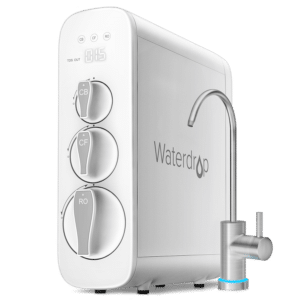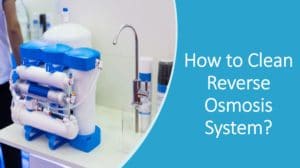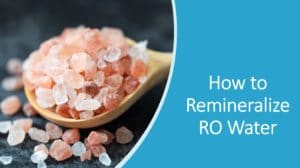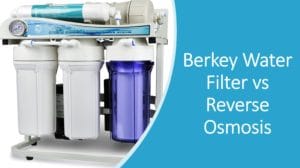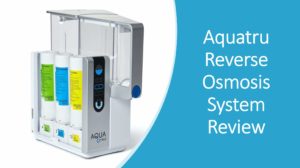How much does a reverse osmosis system cost? While there are several factors involved, you can expect to spend between $150 to $20,000 for an RO system.
If you want a low-cost option, you can go for a single tap countertop system that you install yourself. You may need to hire someone for an under-sink one, but it will not be as visible.
Larger households may desire a whole-house unit to clean the water at every tap, but it will cost significantly more.
This article breaks down the costs involved with getting a reverse osmosis system.
How Much Does a Reverse Osmosis System Cost?
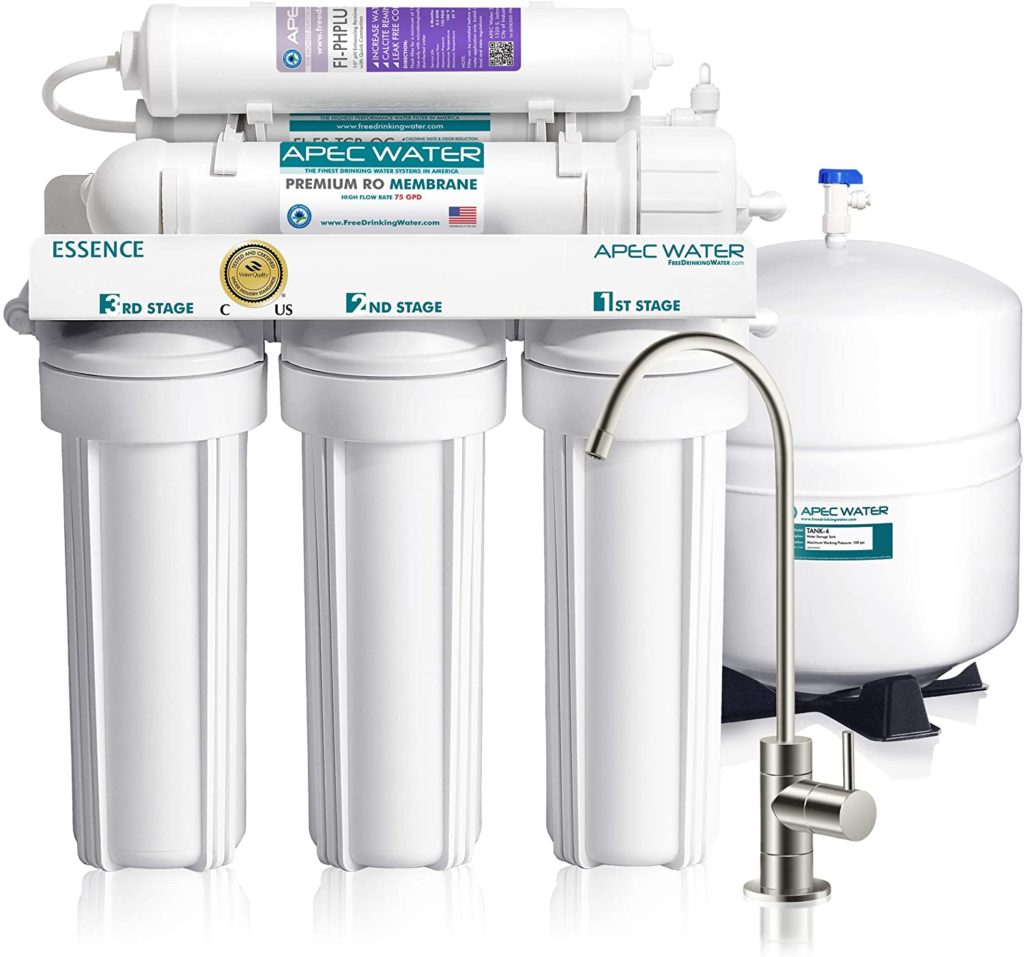
A reverse osmosis system cost can range from $150 to $20,000, depending on factors such as:
- Type: single tap costs less than the whole house, and one for home use is cheaper than one for a commercial property
- Quality: high-quality filters generally cost more, and most bargain brands provide subpar products
- Stages: RO systems can have up to seven filtration stages, with each one removing more contaminants. Having more filters will result in cleaner water for a higher cost.
- Features: some systems will add healthy minerals back to the water after filtering contaminants, which can increase the price point
You may need a different RO unit based on your property’s size, where you need clean water, and the source’s quality. The reverse osmosis system cost varies on a case-by-case basis, so you might need to hire a professional to get a quote.
Single Tap/Point-of-Use Reverse Osmosis System Cost:
Single tap RO systems typically cost between $150 and $1,300. They are the most affordable option because they only filter water from one source, or the point of use (POU). People usually install them to get clean drinking water.
You will find a few variations of the POU system:
- Countertop: $130 to $500
- Tankless: $300 to $600
- Under-sink: $190 to $600
Some people install these systems near washing machines or behind refrigerators. They can get rid of wasted water as well.
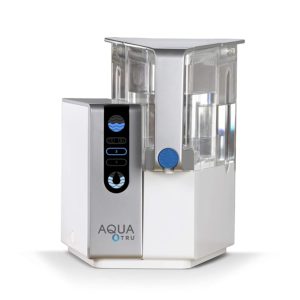
- Filter Stages: 4
- Dimensions: 14 x 12 x 12
- Weight: N/A
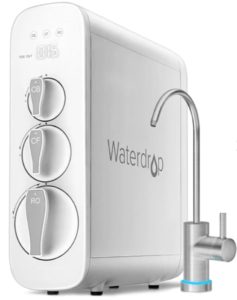
- Filter Stages: 7
- Dimensions: 18.06 x 5.68 x 17.76
- Weight: 31 lbs
Whole House Reverse Osmosis System Cost:
A point of entry (POE) or whole house reverse osmosis system cost starts at a higher price point than POU. They soften the water supply, remove chlorine, and create clean drinking water for your entire building by treating mainline water as it enters your house.
People will install these if they need clean water from multiple taps or have several small apartments. Due to their high cost, fewer people install them. Nevertheless, you may wish to get one if you have or use:
- Well-water
- Rainwater
- High chlorine levels
- Hard water
- Water softeners
These can cost between $650 and $10,000, depending on the materials you need to buy, your desired quality, and the necessary size. One must figure out the price holistically with a professional because of the personal nature of the system.
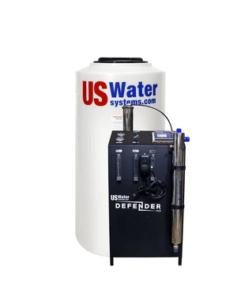
- Filter Stages: 6
- Dimensions: 29 x 29x 58 inches (140 Gallon tank)
- Weight: 300 lbs
Commercial RO System Cost
If you have a commercial property that needs a filtration system, you may spend between $1,000 and $20,000. These RO systems are also POE. You might want one if you run a hotel, distillery, or restaurant to treat large volumes of water at once.
Industrial properties vary based on the business’s water needs, so one cannot give a cost estimate.
Reverse Osmosis System Installation Cost
If you opt for a professional installation, you can expect to pay between $100 and $1,500. Most POU systems require little labor and equipment to install, so you may do it yourself or spend between $100 to $300. A countertop is usually easier than an under-sink, but most are installable with simple equipment.
A whole house or commercial RO system generally costs between $200 and $700 but can reach $1,500. The price point depends on the size, accessibility, space availability, and necessary tools.
Professionals can provide insurance to help you with maintenance down the line, and they will guarantee that the system runs correctly. Ensure you weigh the costs and benefits of installing yourself or hiring someone before making a decision.
Reverse Osmosis System Maintenance Cost
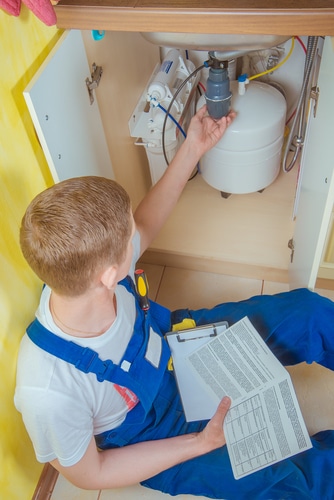
RO systems can have a steep upfront cost, and some options require more maintenance than others. Some of the common issues you may encounter include:
Filter and Membrane Replacements:
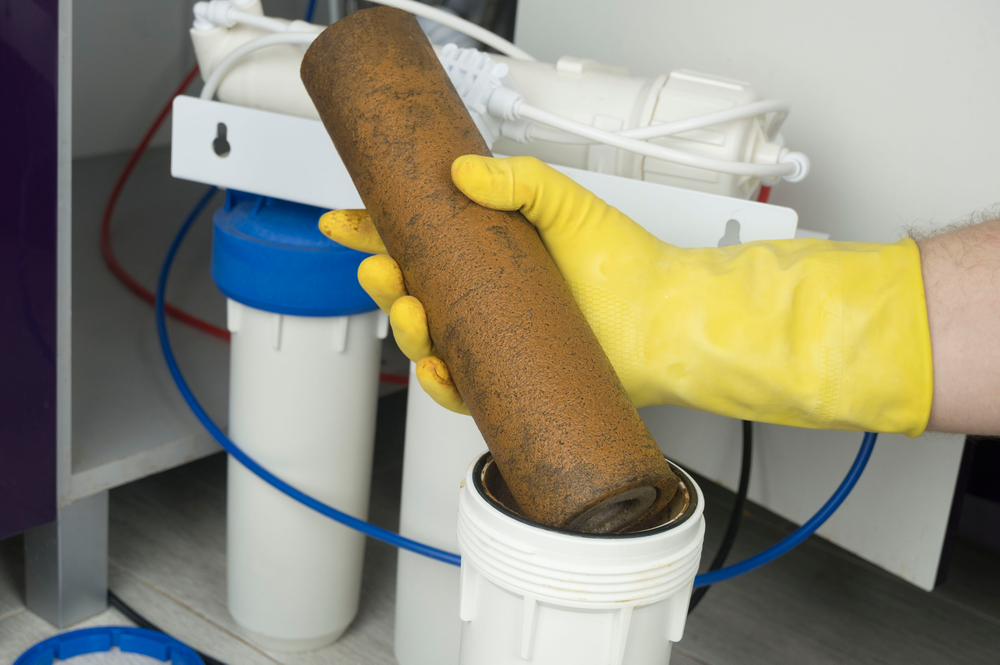
Changing your filters and membranes depends on how much you use them, the brand you bought, and the water source.
If you use well-water or live in a city with poor quality, you will need to replace your filters more often. The more contaminants they need to remove, the more use they get, and the more you need to exchange them.
Also, each filter may need to follow a different replacement schedule. Look into the specific brand to see when they recommend replacement. If your water starts tasting off, you may need to acquire a new one.
Electricity:
Countertop RO systems require electricity to send water through the filters. Most have low wattage and should not spike your electricity bill, but keep in mind that it may increase.
If you need a pressure pump, UV light, or water softener, you will probably need additional electricity to operate your system.
Wastewater:
RO systems result in two streams of water: clean and waste. Wastewater contains all of the contaminants removed by the unit.
If you filter a high volume of water, you may drive up your water bill due to the amount that goes through the system to provide the desired quantity.
You can use your wastewater by purchasing a recycle valve or selling it to a treatment plant.

